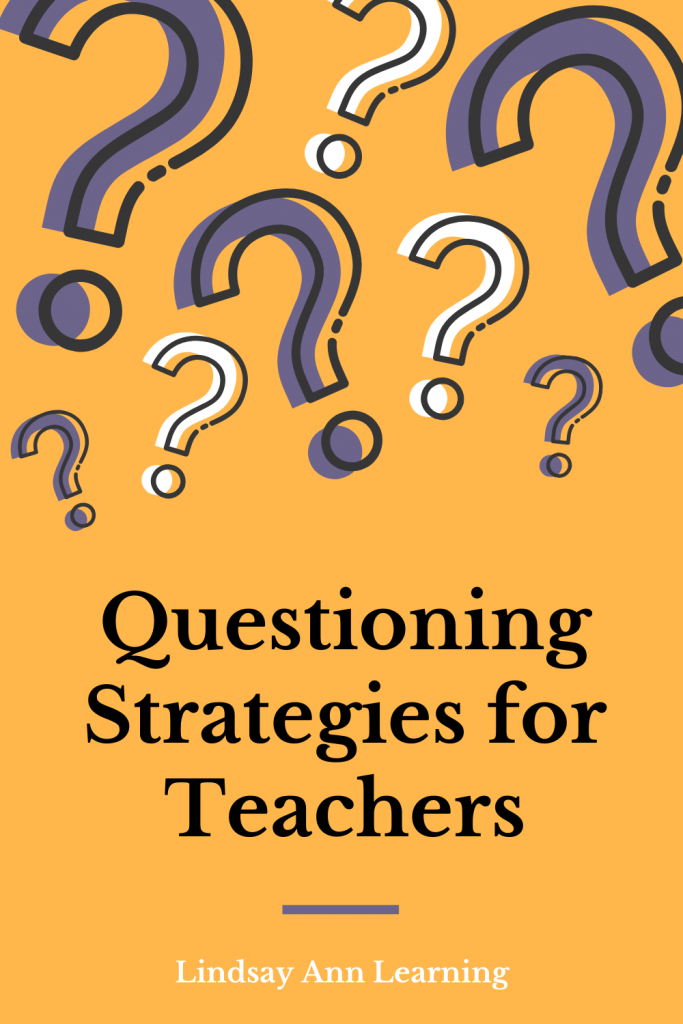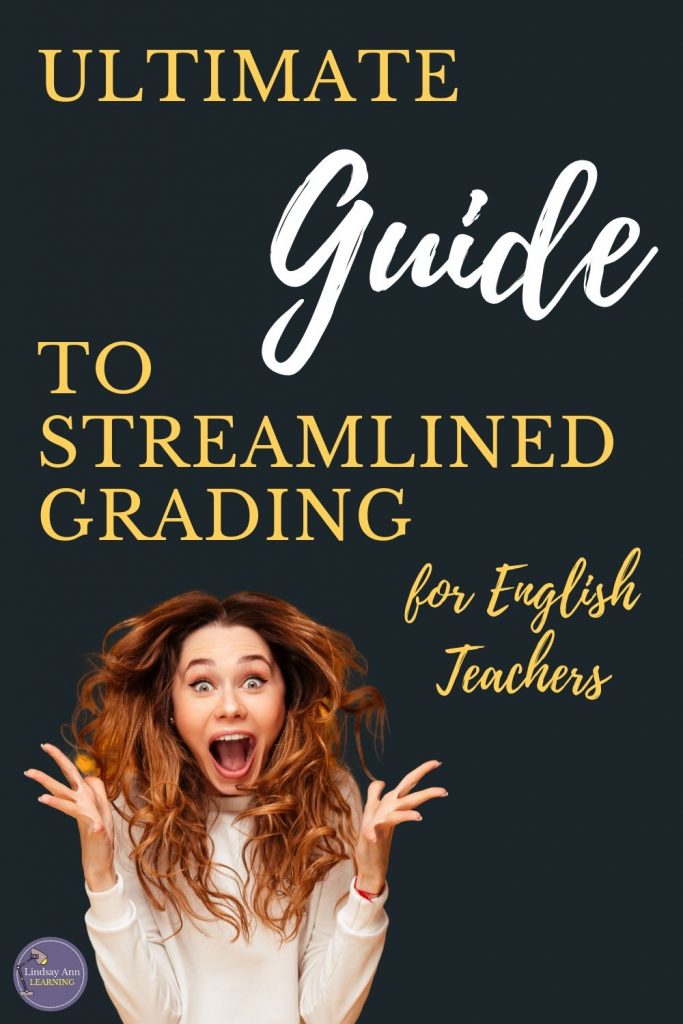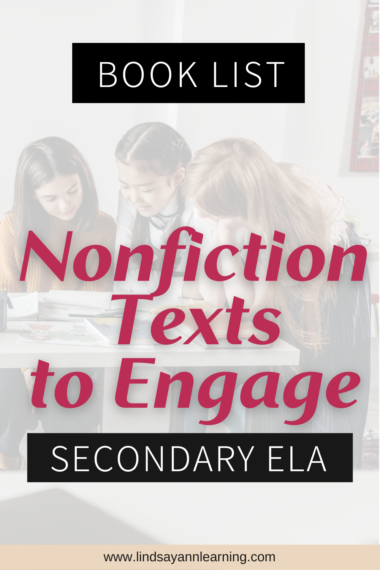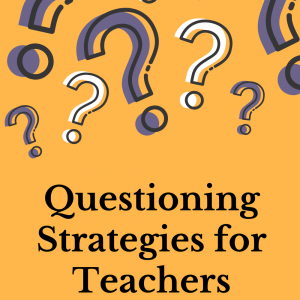Using Questioning Strategies to Engage All Learners
If you’ve ever sat in a room full of crickets, errrr students, you know the awkwardness of teacher wait time and students who don’t want to be put in the spotlight. Having a variety of questioning strategies is important in times such as these.

Whenever I have a student teacher, in observing I am able to reflect on my own practice and realize how much veteran teachers may take their questioning techniques for granted.
We gain a sense, over time, for how to talk so that students will listen. We have not only one or two strategies for any given situation, but a whole toolbox of strategies that we might try if something isn’t working.
And we frequently pivot naturally, mid-lesson, if all isn’t going according to plan. In fact, having a plan that depends upon and is co-created with the students is my goal for any lesson that involves class discussion.
This post is going to give you some questioning strategies to add to your toolbox. These techniques will help you AND your students become better at asking questions.
Most importantly, these questioning techniques will lead to more student learning in your classroom

Educational researcher, John Hattie, who I talked about in my previous post on teacher collaboration, has conducted research to prove that questioning strategies have an effect size of .48. (For reference, anything above .4 is meaningful and worth our focus and effort as teachers.)
Highly Effective Questioning
#teachertruth: Some classes or students are quite introverted.
#alsoteachertruth: Other classes or students won’t be quiet.
In the middle of all of this, teachers have to wear the hat of facilitator. We have to be able to direct student learning, know when to question, how to question, when and how to follow-up, and which approach may work best for a particular student.
Questioning strategies and other teacher facilitator tricks should be natural to the way we do business in our classrooms. They should be part of our lesson design, sending messages about learning just as the Harry Potter costume designers designed Snape’s cloak as a nod to Salazar Slytherin.
Questioning Strategies in the Classroom
As we seek to create relevant and authentic lessons shaped by teacher and student questioning, it is important to remember that building teacher student relationships goes hand-in-hand with the curriculum and skills.
I’ve come to realize that students pick up on our teacher vibes. Some may call it confidence, some may call it skill, some may call it being a “good teacher.” I have learned, though, that students, like babies, can sense when a teacher is not confident or not interested.
It’s all of those little cues that we send to students…
- The way we greet them at the door
- Our body language
- Our organization
- Knowledge of students as learners
- The list goes on, and somewhere on it, probably right after “mastering the teacher stare” and right before “being almost as funny as Trevor Noah” is using questioning strategies.
Yes, our questions are part of our teacher vibe and they are a part of the hidden “art” of teaching.

Set the Tone With Questioning in the Classroom
Questioning and how you respond to students communicates your beliefs about them and their learning.
How you ask questions can imply “I believe in you.” or “I think you’re interesting.” or “I value your ideas.” or “Knowledge is important.” or “Let’s create our own answers together.”
Use Levels of Questioning
Where do you spend the most time in your classroom?
- Level one questions depend on simple, factual or literal knowledge of content.
- Level two questions ask students to make inferences.
- Level three questions ask students to think about universal themes and big ideas.
Do a quick question audit to determine where you and your students spend the most time. This may change depending on the goal for student learning, but in the high school English classroom I spend most of my time alternating between levels two and three.
Also consider that, for scaffolding purposes, it’s okay to mix open and closed-ended questions. You might use closed-ended questions or level one questions to build a foundation for those more complex questions or to break down a complex question for students to gain confidence.
If you’re interested in reading more about questioning to encourage critical thinking skills, check out Hess’ Cognitive Rigor Matrices (CRM’s).

Encourage Complex Thinking
Next, consider whether your questions lead students to use higher-level thinking skills.
Are students challenged to make connections, compare and contrast, think about cause and effect, to synthesize and re-define, to analyze and draw conclusions?
To get here, you should think about how to level your questions and classroom activities.
Students often aren’t able to get to those higher levels without some scaffolding, reading of multiple texts, brainstorming, idea sharing and discussion in pairs and small groups.
Lengthen Teacher Student Interactions
I often notice that teachers may be hesitant to follow-up with students. Instead of drawing out the interaction, these teachers shut it down and move on too quickly. Teachers may not notice that they are doing so. However, if their response to a student is a simple “yes” or “no” or “thank you for sharing” before moving on to ask another question, teachers are communicating not only that there is a right or a wrong answer (encouraging students to seek teacher validation and creating a power imbalance in the classroom) and they are ending the dialogue.
So, how long is your average interaction with students, whether in whole class discussion, during small group work, or even during writing conferences, etc?
Think about how you can use follow-up questions to lengthen the interaction and/or invite other students into dialogue with that student.
Try Instead:
- Yes, and… (ask a follow-up question)?
- Can you give an example?
- What if…?
- How could you…?
- How does your idea connect to…?
- Who can add to this?
- Who has a different perspective?
- What do you think of…
Use Text Based Questioning
Encourage use of the text and ask students to support their thinking.
What’s more, teach students to ask other students for support. In my Socratic Seminars, for example, students know that they can and should challenge the thinking of others by connecting to the text.
Demonstrate Curiosity
I’m a learner along with the students in my classroom. I’ve learned to switch the phrasing of questions to show my own learning.
- To show that I’m curious and interested, I model that I’m thinking along with the students by phrasing questions as “I wonder…” or “What if…”
- I ask students “Why do you think that?” or “What led you there?”
- Be a mirror. Paraphrase what a student is saying back to the student in order to check for understanding.
Increase Motivation & Engagement Through Questioning Strategies
It’s important to recognize that questioning and activities that center around questions and student discussion are a way to encourage student engagement and motivation.
It is so important to plan activities that give students the opportunity to think, including all levels of questions because it is proven to increase student achievement.
Students who are actively engaged with questioning in the classroom are better prepared for the workplace and become problem solvers rather than passive learners.

Acknowledge. Redirect. Focus. Talk it Out.
Even if a student doesn’t get an answer correct, I use that response to continue building the conversation.
Let’s pretend, for example, that you’ve just asked table groups, after a hexagonal thinking activity on “I Have a Dream,” to share what they’ve noticed the author doing to demonstrate ethos.
And let’s pretend that Robert, a student who is eager to participate, speaks up and talks about how the author is using repetition of “I have a dream.” He shares how this repetition makes the audience feel inspired that equality might be possible.
Hmm. Robert’s thinking, though mis-labeled, is sound. His mistake is in sharing out about the wrong rhetorical appeal.
Instead of shutting it down, letting Robert know that, sorry, what you’ve shared is actually pathos instead of ethos, I’d find a way to recognize Robert’s thinking.

I’d respond by acknowledging the accuracy of his insight, that this repetition, in fact, does tug at the audience’s heartstrings. Then I’d say something like “often, one technique can work on several different levels. Robert, you’ve shown us how repetition is demonstrating pathos. I wonder if you can also tell us how it’s demonstrating the author’s credibility?”
Then, if he pauses or is unsure, I’d follow up with “Think about that word “dream” and the “I” statement MLK is making. How does this show the audience that he can be trusted and cares about the subject of his speech?
Likely, at this point, Robert will offer up a thought which I will use to continue the conversation. If not, I would ask students to do a 30 second “talk it out” to discuss together, then bring them back together and have them share. This opportunity to break, share, and return to me allows students to gain confidence by sharing their ideas with other students at their tables. It also serves as a quick brain re-set.
Repeat. Rephrase. Reduce. Reach Out.
The previous example is a twist on the 4 R’s strategy suggested by Jim Knight in High Impact Instruction: A Framework for Great Teaching.
The idea behind the 4 R’s is that you want to increase the likelihood that any student can respond to your question.
If you’re not trying to use and turn a student’s response to feed into more conversation like in the Robert example above, the 4 R’s strategy helps teachers make sure that they don’t hear crickets during student discussion.

First, use your teacher wait time (and make sure that students are primed for discussion having done prior thinking on paper or during an activity).
Next, simply repeat the question. If you find the same students always raising their hands, you might make a rule that everyone thinks for 30 seconds and then repeat the question.
If no one bites, try reducing the question by asking a smaller question that leads into that bigger question. Maybe your question was too big, too intimidating. What’s a smaller question that students could answer as a precursor to your bigger question?
Finally, as I suggested with the Robert example, you can have students reach out and discuss with another student or with their table group to generate ideas. Then, you can call on tables or pairs of students for response.
Design Idea-Generation Activities
I’ve mentioned scaffolding up above, but it’s SO important to allow students to explore their ideas prior to discussing, especially when it comes to those level two and three questions.
Here are some quick ways to percolate ideas and make sure that all learners are engaged:
- Speed Dating
- Gallery Walks
- Journal Writing
- Jigsaws
- Station Rotations
- Flipgrid Response
- Hyperdoc Exploration
- Graphic Organizers
- Small Group Discussions
Teach students to lead with questioning strategies
I want students to have the opportunity to create and ask really good, thought-provoking questions. Whether it be through inquiry-based learning, a QFT discussion, a Podcast project, a Socratic Seminar, or another student-led activity, it’s important to help students be curious as learners.
I’ve noticed that, by the time they reach me, high school students need to re-learn the art of asking questions, not for the sake of getting an answer “correct,” but for the sake of learning.

We need to, as teachers, honor question asking and take the time to be thoughtful in how we shape student thinking with questions.
Truly, it is one of those “hidden” teacher tactics that elevates teaching to an art form.
Hey, if you loved this post, I want to be sure you’ve had the chance to grab a FREE copy of my guide to streamlined grading. I know how hard it is to do all the things as an English teacher, so I’m over the moon to be able to share with you some of my best strategies for reducing the grading overwhelm.
Click on the link above or the image below to get started!
















 Teacher Work Life Balance A-Z Guide
Teacher Work Life Balance A-Z Guide

[…] Questioning How a teacher asks questions can have a huge impact on how students see themselves. I want students to know that I value […]